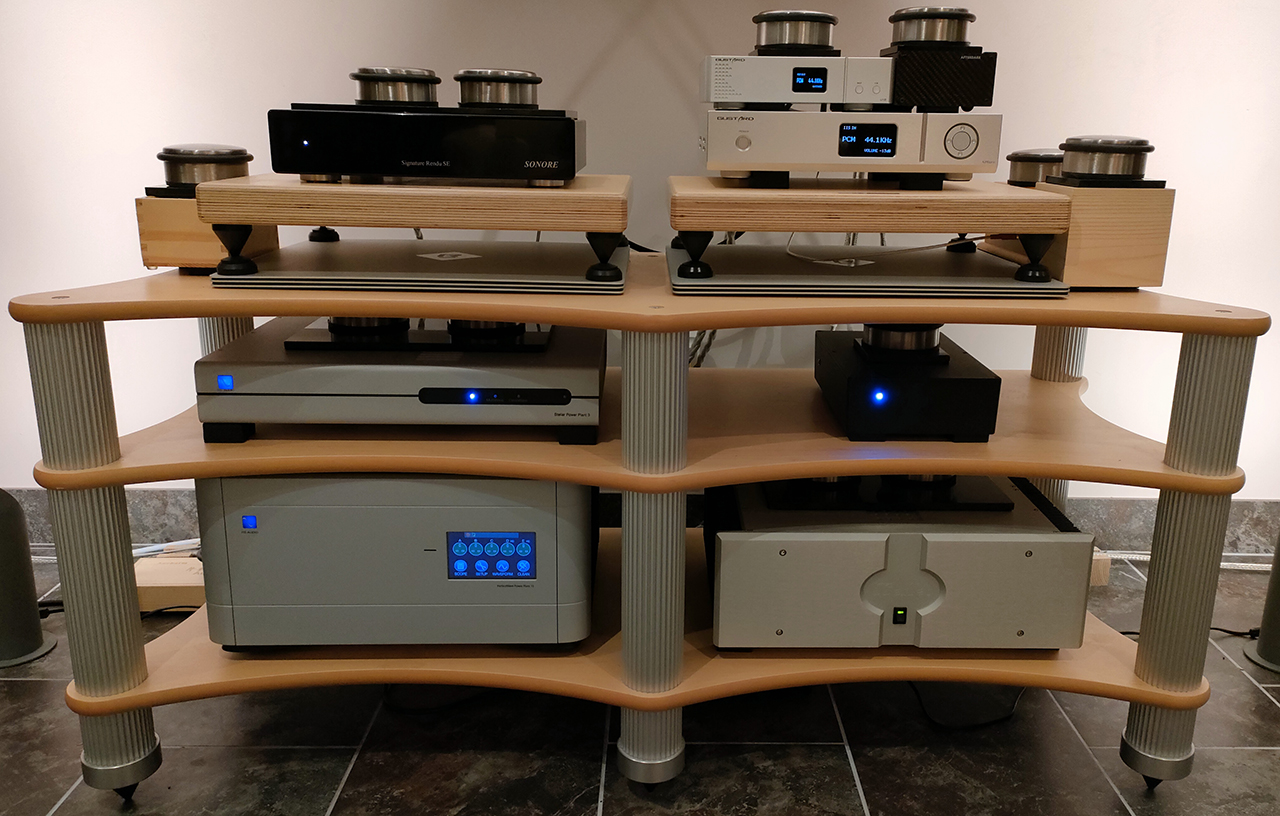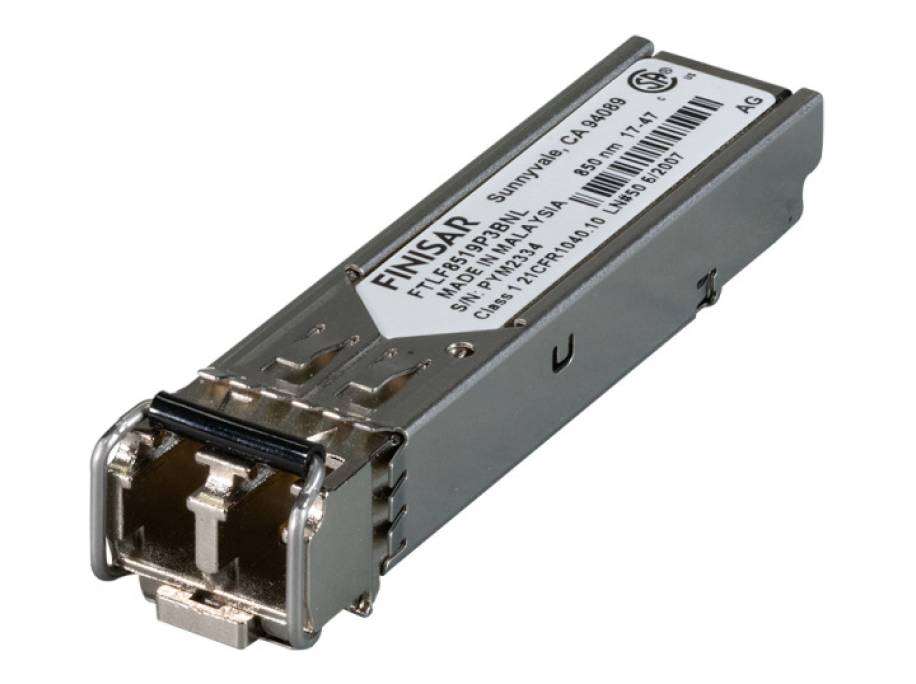Post by MartinT on Jun 24, 2022 21:48:34 GMT
Today my new streamer arrived: a brand new Sonore Signature Rendu SE Optical Tier II, to give it its full name. This is a big box and it somewhat startled me after being used to the diminutive ultraRendu. The size is very close to my Gustard X26 Pro DAC and it's almost as heavy. The finish is a beautiful heavyweight case with lustrous black front panel.
For those not familiar with the Sonore range, they are digital audio streamers (or network bridges) which use apps to provide a range of standards by which they can be controlled. They connect to the internet via a router and send output directly to your DAC via the USB interface. Their whole design ethos is ultimate sound quality, with this model being the top of the range.

The Signature Rendu SE (hereafter called the Rendu) supports SqueezeLite, Shairport, MPD/DLNA, Songcast, HQ Player, Roon, LMS, BubbleUPnP and Spotify Connect. As well as many other services, there is key support for Spotify, Qobuz (up to 24/192) and Tidal (MQA with a supporting DAC). This may seem daunting at first, but there are paths to many of the services and advice is available on several forums as to how best to attain what you need.
I'm a Qobuz user with occasional Spotify play for rare catalogue items, so I use the MPD/DLNA app for Qobuz with BubbleUPnP MPD controller for Android, and Spotify Connect app with Spotify for Android.
Screenshot for the Rendu interface from my Samsung S7 FE Android controlling tablet.

The Rendu, as stated, is all about sound quality and contains a lot of circuit optimisations such as multiple linear power regulators, very low noise femto clocks and a custom power supply in a large case with plenty of space to lay out the circuitry. Those are not the only things that differentiate it from the ultraRendu, though. The key functional difference is that it accepts only optical input from the internet in the form of OM1 twin optical fibre with an LC connector.
Sonore's thinking is that, to achieve the lowest possible noise floor and therefore the highest resolution down to the finest detail, it is necessary to isolate the Rendu from the noise transmitted via ethernet cable from a broadband connection. The use of optical cable ensures virtually perfect isolation as it is not subject to RFI/EMI pollution even over long runs. There are two ways to convert most routers from ethernet output to optical: one is via a simple adapter and the other is to make use of an EtherREGEN reclocker, which I happen to have already. Using it in 'reverse', with a short ethernet cable from the router to the 'B' side, with optical taken from an SFP (Small Format Pluggable) module plugged into the 'A' side, performs the conversion and also clocks the data stream very accurately.
I had to redesign my system layout to put all of the 'remote' components together with my 4G modem in the corner of the room, providing a clean optical feed to the Rendu on my system rack.
The corner equipment: 4G modem, EtherREGEN, its external clock, power supplies and grounding boxes.

The system rack with the Rendu top-left, DDC, DAC and master clock top-right, two regenerators centre- and bottom-left, clock PSU centre-right and power amp bottom-right.

I've updated the system diagram in my blog here.
I'm going to give the Rendu several days to settle and burn-in before getting serious with evaluation. However, the keywords in my notes so far are clean and tight sound with wider soundstage and even greater note decay and low level detail.
I want to give a shoutout to Adrian at Sonore and Martin at Audiostore for their excellent help and support, not to mention rapid despatch from UK stock.
For those not familiar with the Sonore range, they are digital audio streamers (or network bridges) which use apps to provide a range of standards by which they can be controlled. They connect to the internet via a router and send output directly to your DAC via the USB interface. Their whole design ethos is ultimate sound quality, with this model being the top of the range.

The Signature Rendu SE (hereafter called the Rendu) supports SqueezeLite, Shairport, MPD/DLNA, Songcast, HQ Player, Roon, LMS, BubbleUPnP and Spotify Connect. As well as many other services, there is key support for Spotify, Qobuz (up to 24/192) and Tidal (MQA with a supporting DAC). This may seem daunting at first, but there are paths to many of the services and advice is available on several forums as to how best to attain what you need.
I'm a Qobuz user with occasional Spotify play for rare catalogue items, so I use the MPD/DLNA app for Qobuz with BubbleUPnP MPD controller for Android, and Spotify Connect app with Spotify for Android.
Screenshot for the Rendu interface from my Samsung S7 FE Android controlling tablet.

The Rendu, as stated, is all about sound quality and contains a lot of circuit optimisations such as multiple linear power regulators, very low noise femto clocks and a custom power supply in a large case with plenty of space to lay out the circuitry. Those are not the only things that differentiate it from the ultraRendu, though. The key functional difference is that it accepts only optical input from the internet in the form of OM1 twin optical fibre with an LC connector.
Sonore's thinking is that, to achieve the lowest possible noise floor and therefore the highest resolution down to the finest detail, it is necessary to isolate the Rendu from the noise transmitted via ethernet cable from a broadband connection. The use of optical cable ensures virtually perfect isolation as it is not subject to RFI/EMI pollution even over long runs. There are two ways to convert most routers from ethernet output to optical: one is via a simple adapter and the other is to make use of an EtherREGEN reclocker, which I happen to have already. Using it in 'reverse', with a short ethernet cable from the router to the 'B' side, with optical taken from an SFP (Small Format Pluggable) module plugged into the 'A' side, performs the conversion and also clocks the data stream very accurately.
I had to redesign my system layout to put all of the 'remote' components together with my 4G modem in the corner of the room, providing a clean optical feed to the Rendu on my system rack.
The corner equipment: 4G modem, EtherREGEN, its external clock, power supplies and grounding boxes.

The system rack with the Rendu top-left, DDC, DAC and master clock top-right, two regenerators centre- and bottom-left, clock PSU centre-right and power amp bottom-right.

I've updated the system diagram in my blog here.
I'm going to give the Rendu several days to settle and burn-in before getting serious with evaluation. However, the keywords in my notes so far are clean and tight sound with wider soundstage and even greater note decay and low level detail.
I want to give a shoutout to Adrian at Sonore and Martin at Audiostore for their excellent help and support, not to mention rapid despatch from UK stock.




 ).
).